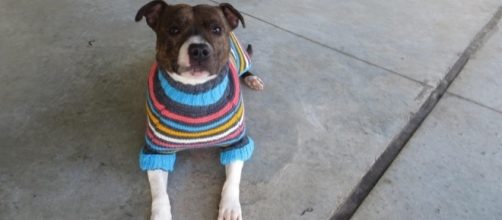There are always so many Dogs in need of forever homes and loving families, but some dogs are finding it harder to be adopted than others. According to recent studies, senior-aged pets and those with dark or black colored coats, are less likely to be adopted. While seniors are commonly pushed aside due to their age, researchers are not entirely sure why color might make a difference in choosing a pet. In light of this statistic, one Organization developed a way to help dark-coated pets stand out to potential adopters...
What is Black Dog Syndrome?
Are You Guilty of Black Dog Syndrome? https://t.co/ol2qRyetVA pic.twitter.com/8vWeJjPo61
— Rover.com (@RoverDotCom) March 25, 2016
Despite the personality or breed of dog, these precious pets are less likely to get adopted. Because of the frequency of the situation, a name was developed to describe the problem, known as 'Black Dog Syndrome'. Researchers believe that the issue could be the result of a combination of things that leaves a dog longing for a home. It could be due to size, vague facial features, kennels with dim lighting, and the negative portrayal of dark-coated pets in movies, books, and other media. Black dogs are portrayed as big and mean just like black cats are associated with superstition, bad luck, and witches.
As stated by Scottish SPCA superintendent Sharon Comrie to the Dodo news team, "Through no fault of their own, black dogs are almost always the last to find new homes."
Introducing bright sweaters to help dogs get adopted
Animal activists women’s groups have partnered together with the Scottish SPCA to knit colorful sweaters and jackets that would help dark-coated dogs have a better chance at a new home and family. SPCA superintendent Comrie states that the knitted dog jackets and sweaters are beautiful and soft on the skin of the dog, and also have an element of stretch and flexibility to ensure the comfort of the pet. The garments are going to be created in a multitude of colors and fabric contents, including wool blends.
With the support of the knitters, there is hope that many different jackets and sweaters will be made available for a lot of dogs to wear with pride.
These pet garments are designed with hopes of getting the less adoptable dogs to stand out for potential adopters. Additionally, the sweaters can become a conversation point, bringing more attention to the dogs. Shelter dogs need and deserve loving homes, and these garments may be a great help in getting dogs more noticeable in facilities nationwide.
What do you think of this neat idea? Should more organizations implement this sweater-policy?

